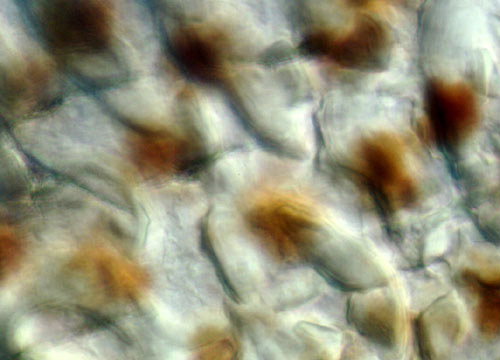Cycloid Fish Scale
The principal purpose of scales is to give fish external protection, but not all fish species have them. However, those that do may be covered in scales of various shapes, sizes, and types. The primary categories of fish scales are placoid, cosmoid, ganoid, cycloid and ctenoid scales.
 DIC
DIC
 Phase
Phase
Phase
Cycloid scales are smooth, flat, round and consist of two distinct regions. The deeper fibrous layer is mainly composed of collagen and the outer bony layer is an organic framework saturated primarily with calcium-based salts. Cycloid scales grow larger with the fish they cover, which sometimes result in growth rings that are similar to those found in trees. When weather is cooler, cycloid scales grow more slowly and the rings lie closer together, leaving a dark band known as an annulus. Biologists can estimate the age of fish by counting the annuli on its scales, a feat that can be extremely useful in scientific studies.
DIC
Cycloid scales are most often found on advanced fish species, such as trout, herring, and carp. However, fish are not necessarily covered in a single type of scales. Some species, such as flounders, have ctenoid scales on one side of the body and cycloid scales on the other. Scale type can also vary depending on the sex of the fish. The males of certain species may be covered in ctenoid scales, although the females are enveloped in cycloid scales.













